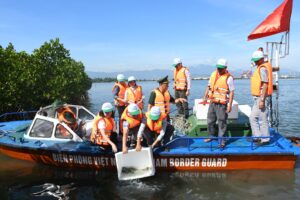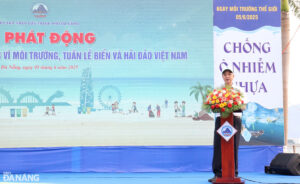On the occasion of the scientific workshop "Research on building a specific model of community-based tourism (CBT) associated with conservation of Hon Yen coral reef and Da Dia complex of Phu Yen province" just held in Phu Yen, Mr Nguyen Van My, Chairman of the Members' Council of Lua Viet Tourism Co., Ltd., a member of the workshop had discussions with Phu Yen Newspaper around the development of local CBT.

People in An Hoa Hai commune (Tuy An district) doing community tourism, contributing to environmental protection of Hon Yen scenic complex
As an expert who has more than 25 years of experience in tourism and has consulted and supported CBT development in many localities, in your opinion, what is the potential for CBT development in Vietnam in general and in Phu Yen in particular?
It can be understood that CBT is a form of sustainable tourism based on local community. CBT development is an approach that maximizes benefits for local people, who use tourism as an economic resource generator. Visitors have to pay when they come to visit and experience cultural and natural values, and this money is used to improve people's lives, help socio-economic development, and contribute to preserve local traditional cultural values and scenic spots.
CBT is a type of tourism that gives visitors the fullest experience of the local community identity. Vietnam in general and Phu Yen in particular have a lot of potential for CBT development, because we have diverse natural resources, human resources, and very specific ethnic cultures...
Homestay is the most vivid model in CBT development. How should this model be implemented, sir?
Homestay is a type of "green tourism", instead of staying at a hotel or motel, visitors will stay at the homes of local people to have a closer and more realistic view of local people’s culture and life.
Currently, many localities encourage the establishment of homestays at CBT sites, but not everywhere is successful. In the midst of a gloomy picture because of homestay losses in many places across the country, the CBT homestay system is a bright spot with many interesting lessons.
The CBT homestay system is successful, first of all thanks to the breakthrough and creativity according to ethnic and regional realities, from design and decoration to culture, cuisine and typical tourism products. Secondly, practical consultants accompany, hands-on, assist in sourcing customers and guarantee the project. Third, the government is subject to change, only supporting policies, creating conditions, not subsidizing, giving money. Fourth, people are proactive, confident, dare to invest capital, do not follow the old way, and stick to the consulting standards. Fifth, transparent prices and service quality to protect people's interests. Sixth, doing CBT is doing business, not following a movement, efficiency is the number one priority.
So in your opinion, in order for CBT to develop sustainably, what should the government and the people do?
For CBT to develop sustainably, it is necessary to change and act first. Tested practice, should not impose models, management methods and subjective regulations but must be creatively applied, making a difference from the selection of materials, design, experience, cuisine, culture technology, OCOP products, to link to survive and develop. Starting from small things such as menus, sauces, spoons and chopsticks, fake flowers, electrical outlets, service attitude; price publicity; offering products instead of discounts, no commissions (except for specialty goods, OCOP...). Implementing conservation for sustainable development, responsible for the community (humanity, nature, living environment).
Practice has proven that CBT not only alleviates poverty but also helps to get rich legitimately, enriching the people and the country. CBT with standard homestays is responsible and sustainable tourism, contributing to change the local appearance and building a new countryside. This is the best way to preserve and develop the cultural values of each ethnic group.
Translated by Hai Loan
















